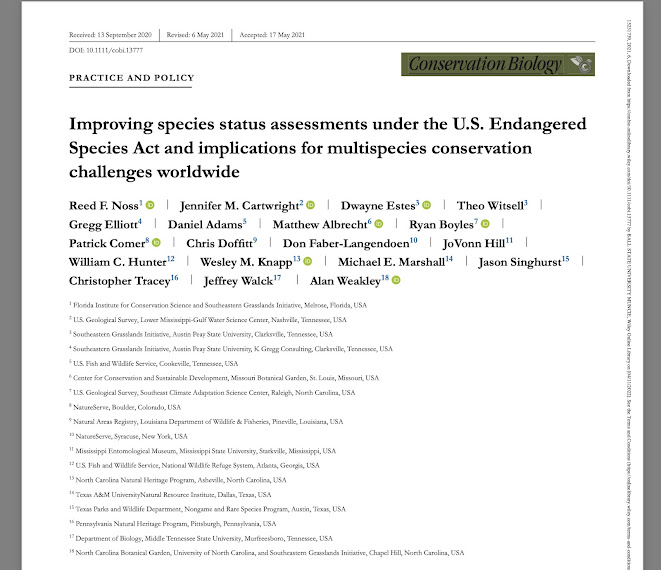Project 3_Myla
Text & Citation
The U.S. Endangered Species Act (ESA) is one of the world’s most powerful and effective biodiversity conservation laws (Goble et al., 2006; Harris et al., 2012). Despite the ESA’s success in improving the status of listed species (Greenwald et al., 2019; Schwartz, 2008), the law is not functioning optimally, for example, times for species to gain protection are lengthy (Puckett et al., 2016). Some 1721 U.S. species (as defined under the ESA) are currently listed and the U.S. Fish and Wildlife Service (USFWS) faces a backlog of hundreds of species waiting for listing decisions or designation of critical habitat (USFWS, 2021).
Despite its successes, the U.S. Endangered Species Act (ESA) has proven challenging to implement due to funding limitations, workload backlog, and other problems. As threats to species survival intensify and as more species come under threat, the need for the ESA and similar conservation laws and policies in other countries to function efficiently has grown.
We considered at-risk grassland species and ecosystems within the southeastern United States, where a disproportionate number of rare and endemic species are associated with grasslands. Discussions concentrated on 5 categories of threats to grassland species and ecosystems, consistent with recommendations to make shared threats a focus of planning under the ESA: (1) habitat loss, fragmentation, and disruption of functional connectivity; (2) climate change; (3) altered disturbance regimes; (4) invasive species; and (5) localized impacts.
The ultimate threats to grasslands and other southeastern ecosystems are urban expansion and other land-use changes (Terando et al., 2014).




Comments
Post a Comment